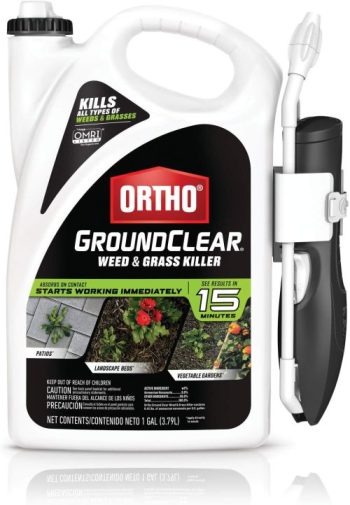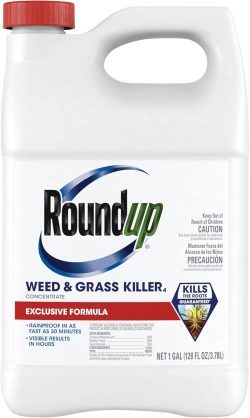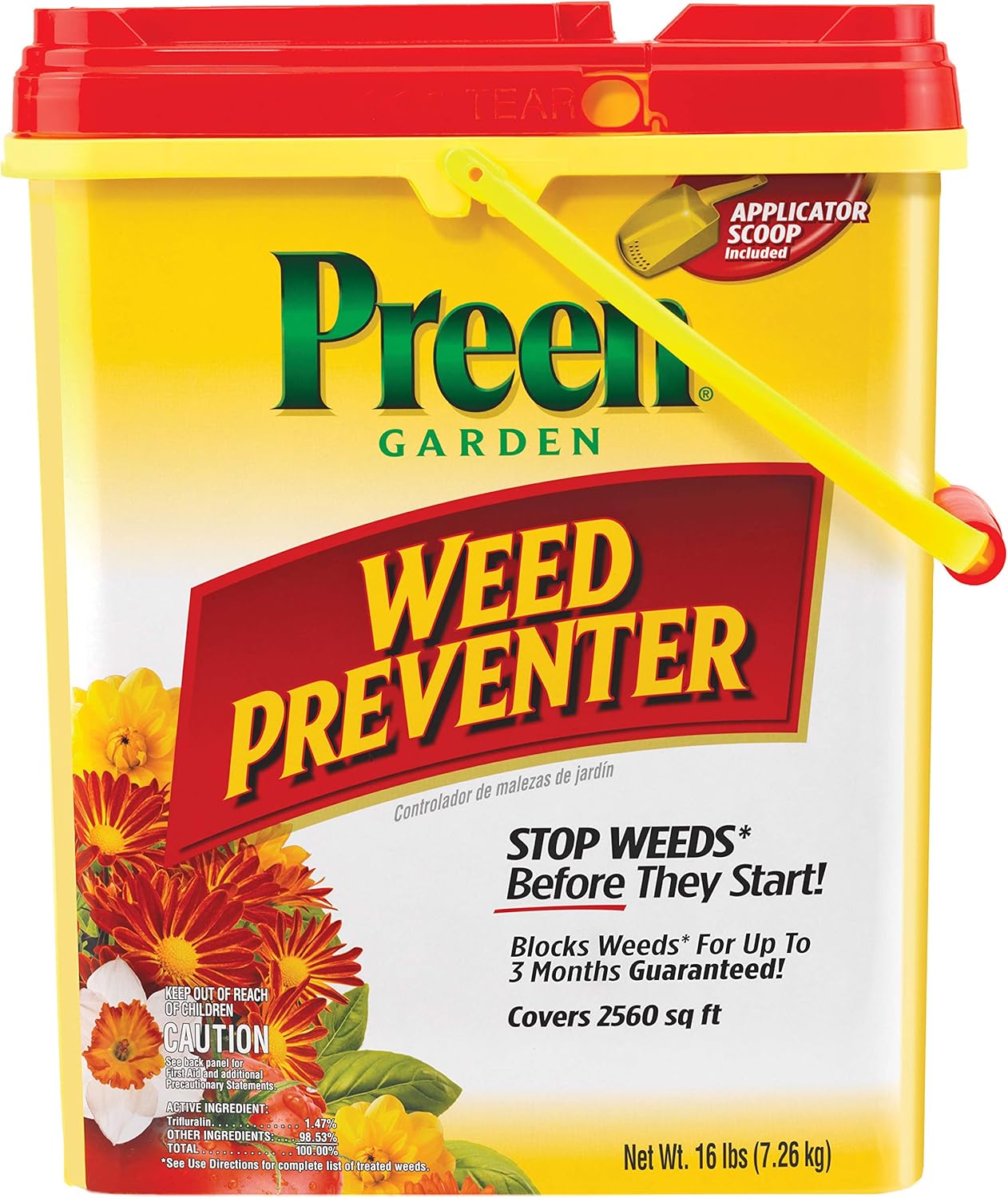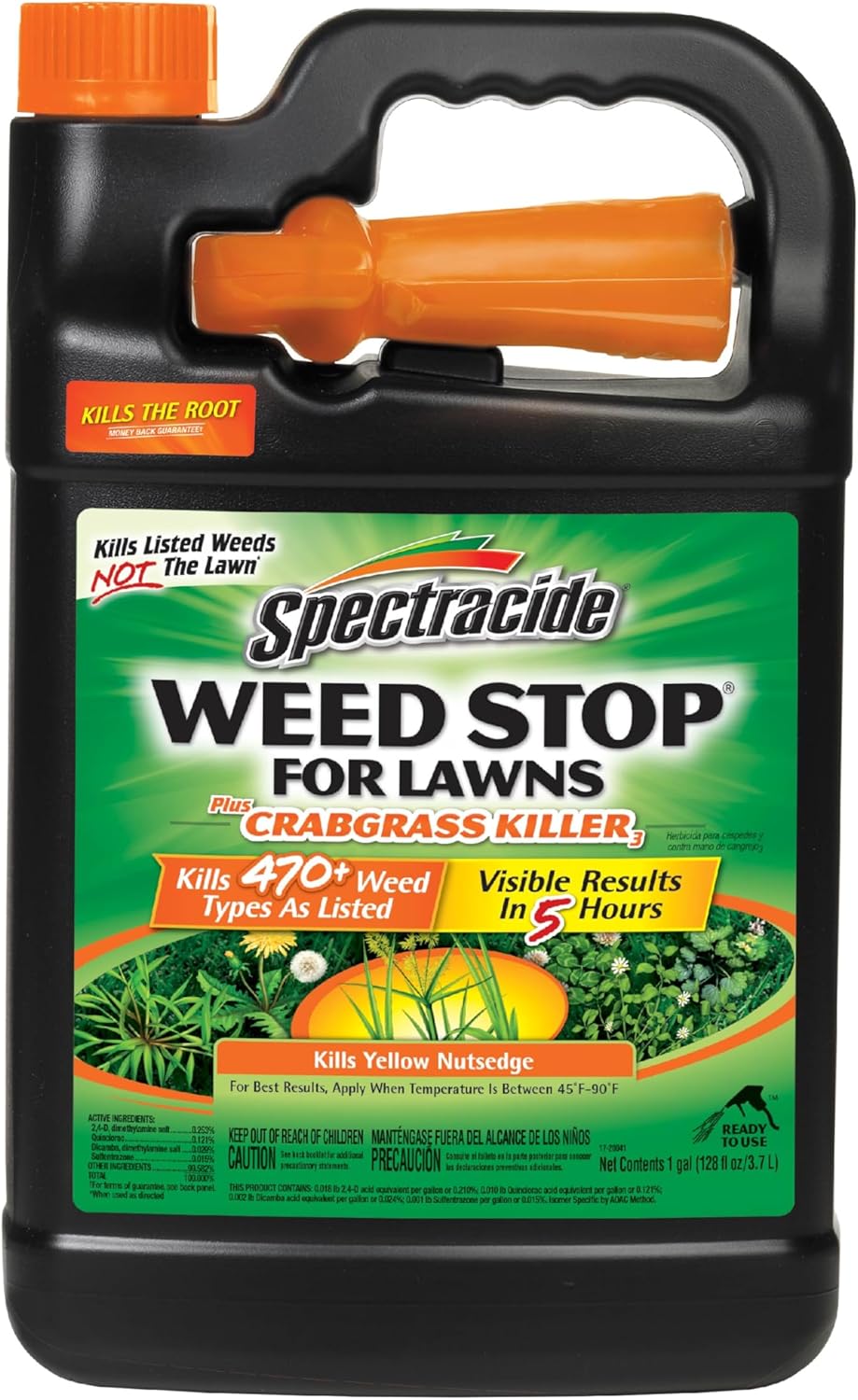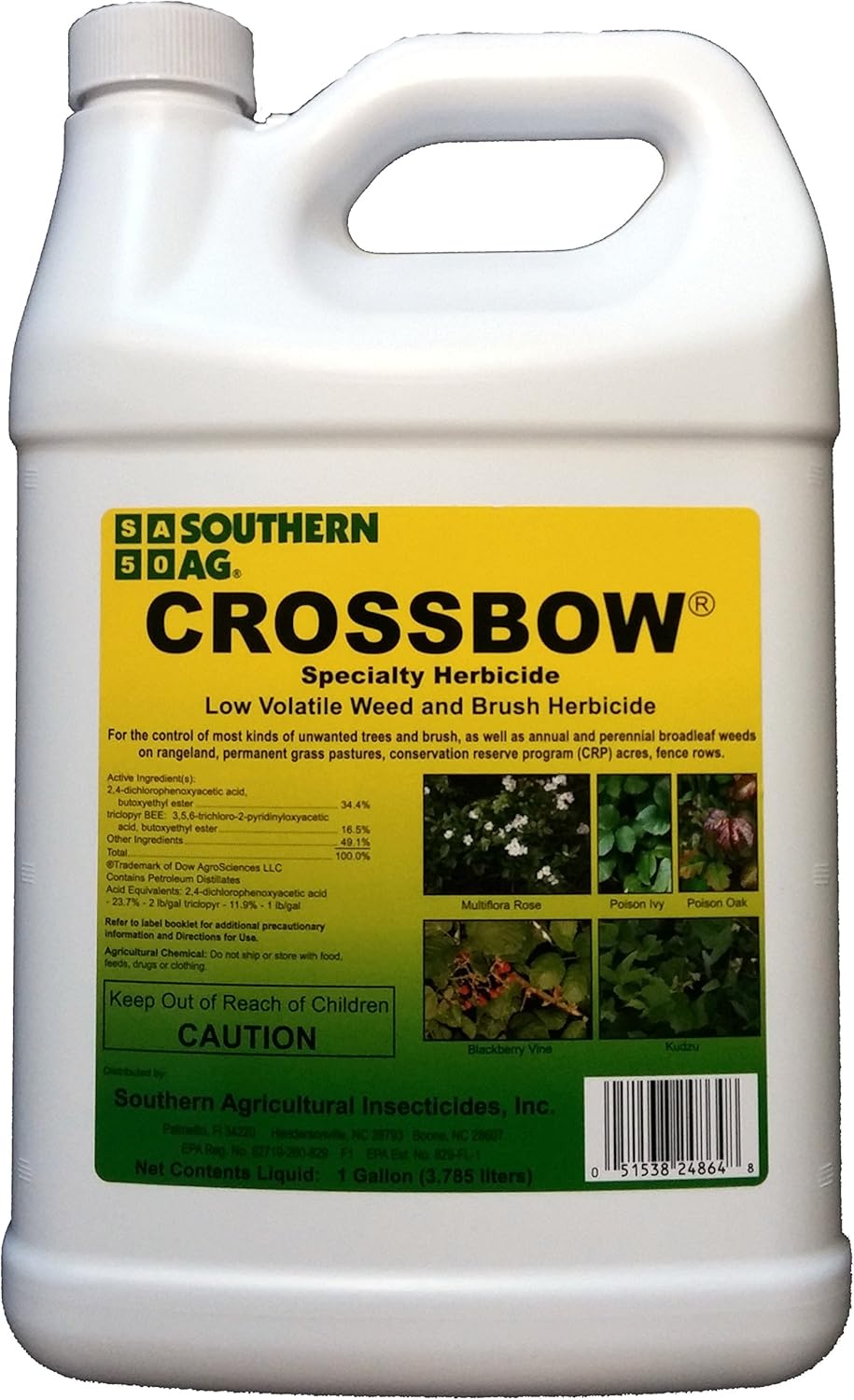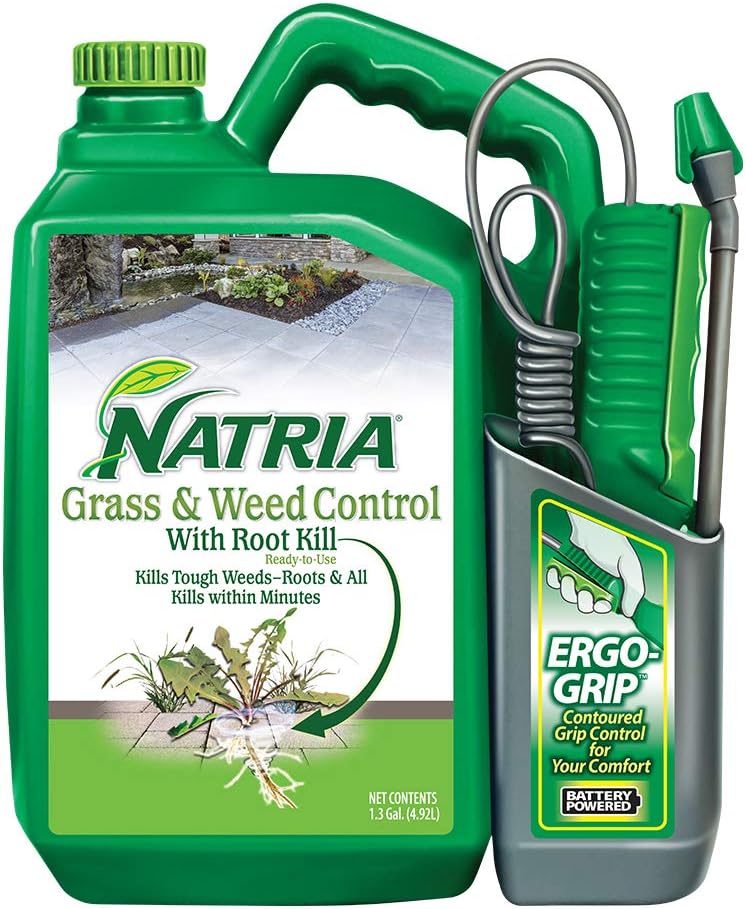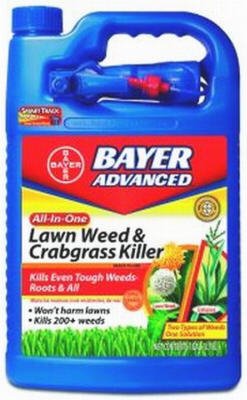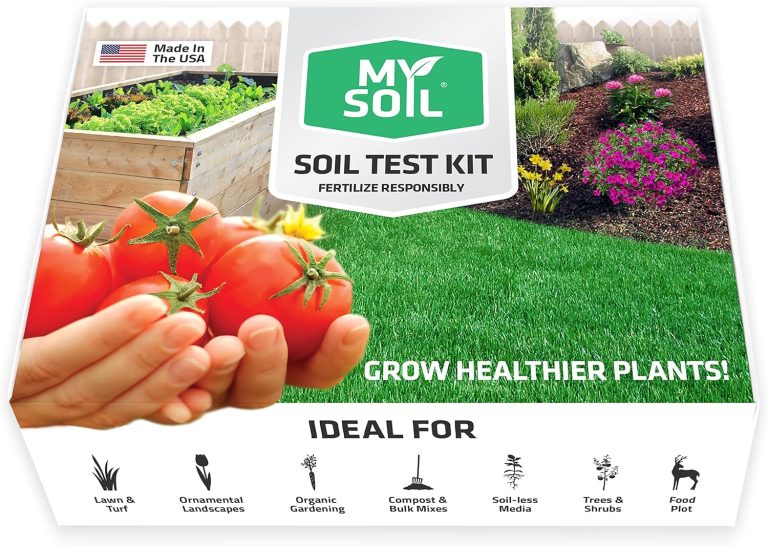8 Best Herbicides and Weed Killers of 2024
Herbicides and Weed Killers are chemical substances produced to prevent the growth of unwanted plants, commonly known as weeds. These chemical substances play a crucial role in agriculture, gardening and landscaping helping to protect crops and enhance the beauty of green spaces.
This comes with controversy, concern surrounding their impact on human health, biodiversity and the environment have sparked intense debates among scientists, policy makers and the public.
They can be broadly categorized into two main types.
Selective:
Targets specific weeds while leaving desired plants unharmed, making them ideal for applications in lawns and gardens.
Non-Selective:
Kills all vegetation they come into contact with, making them useful for clearing large areas or preparing land for planting.
We have created a list of our top picks of weed killers of which we have made a detailed analysis between their different brands or types so it can make easy for you to make a purchase decision.
1. Ortho Ground Clear Weed and Grass Killer
Ortho Ground Clear Weed & Grass Killer kills all types of weeds and grasses. You can see visible results in 15 minutes. You can Use this to keep weeds and grass out of brick walkway. It requires you to spray for a good 3-4 seconds for it to be effective. Kills many types of weeds like dandelion, crabgrass, bindweeds, nutsedge etc. in 24 hours. It is OMRI (Organic Materials Review Institute) listed. You can apply directly to weeds on walkways, driveways, in landscape beds, and around vegetable gardens.
It uses an active ingredient known as Ammonium Nonanoate which is a multi-purpose herbicide that’s been used to suppress weeds, underbrush and mosses and is therefore labeled as organic. It’s a naturally-occurring fatty acid found in a variety of plants and animals. It’s referred to as a soap-salt, as certain fatty acids are also used to make household soap. It was approved for use in 2006.
Ortho Ground Clear Weed and Grass Killer is a “nonselective, broad-spectrum, contact” herbicide. Meaning, it can kill plants you might not otherwise want killed, if sprayed with too much wind, overspray. While labeled “ground clear,” it will clear (kill) the visible vegetation, but not any seeds in the ground because this herbicide only affects the plant tissue with which it comes in contact and has no soil activity. The application rate for the dissolved mixture for Ortho Ground Clear Weed and Grass Killer is 1 gal of liquid per 300 sq. ft.
Pros
Cons
2. Roundup (Glyphosate) Weed and Grass Killer
Roundup weed and grass killer herbicide is very effective. User can see a noticeable effects on the weeds changing their color to brown within 24 hours. One of the standout features of this herbicide is the usage on various location including flower bed, around trees, along driveways and on walkways. Care should be taken while applying on weeds, it can be harmful for the desirable plants as it is a non-selective herbicide
Using a targeted spray technique or a shield can help avoid unintentional damage. The treated areas remain weed-free for several weeks due to its long-lasting formula. The product does not leave a harmful residue in the soil, allowing for planting new flowers, trees, or shrubs in treated areas after a few days.
While being highly effective, is also crucial to handle it with care. The product contains glyphosate which has been a topic of controversy regarding its environmental and health impacts. The Environmental Protection Agency (EPA) in the U.S. says that glyphosate is not likely to cause cancer in humans but It’s also important to follow the safety instructions on the label carefully. Wearing protective gear, such as gloves and long sleeves, and avoiding application on windy days can minimize exposure risks. Additionally, keeping pets and children away from treated areas until the product has dried is advisable.
It comes in liquid form as a dissolved mixture (ready to use) form and in concentrate form. The application rate for the dissolved mixture for this herbicide is 1 gal per 300 sq. ft.
Pros
Cons
3. Preen Garden Weed Preventer
Preen Garden Weed Preventer is a widely used and effective solution for gardeners wanting to maintain the beauty and health of their flower and vegetable gardens by preventing the growth of unwanted weeds. It’s a pre-emergent herbicide that works by forming a protective barrier in the soil, preventing weed seeds from germinating. Unlike some post-emergent herbicides that can damage or kill desirable plants, Preen is designed to be used around established flowers, vegetables, and shrubs without harming them.
Timing is another important factor when using Preen Green Weed Preventer. It should be applied on early spring or late fall, just before the primary weed germination periods. Despite being useful and effective care should be taken while application, read the product label carefully to understand the application rates and any specific restrictions regarding the types of plants in your garden. Additionally, while Preen is effective at preventing weeds from germinating, it will not kill existing weeds, so it’s important to address any current infestations before application.
The Preen Garden Weed Preventer comes both in granular and capsule form. 1lbs. of the weed preventer whether in granular form or in capsule form covers an area of 160 sq. ft.
Pros
Cons
4. Spectracide Weed Stop for Lawns Plus Crabgrass Killer
Spectracide Weed Stop for Lawns Plus Crabgrass Killer is an advanced herbicide specifically designed to target and eliminate a broad spectrum of unwanted weeds and crabgrass. It is safe for use on established lawns. It comes with two options one with the convenience of ready-to-spray and the other in concentrate form. It is a selective herbicide which allows it to target broadleaf weeds without harming desirable grasses. Common weeds that this herbicide and weed killer effectively controls include dandelions, clover, chickweed, and of course crabgrass.
The ready-to-use formulation requires no mixing or measuring—just attach the sprayer to your hose, and you’re ready to tackle your lawn. In the case of concentrate, 1 gallon of water for each 500 sq. ft. to be treated and the maximum application rate is 3.25 FL oz. of concentrate per 500 sq. ft. per application which means 3.25 FL oz. of concentrate should be mixed in 1 gallon of water for 500 sq. ft.
Time to have a noticeable effect is approximately 5 hours. It is rainproof also which allows the user to have a peace of mind that their efforts won’t be washed away by sudden rain showers. For optimal results it should be applied on actively growing weeds typically in early spring or early fall. It is a selective herbicide which ensures that it poses minimal risk to non-target plants and beneficial insects.
One bottle of 128 FL oz. or 1 gal (ready to use) of Spectracide Weed Stop for Lawns Plus Crabgrass Killer covers an area of 5000 sq. ft.
Pros
Cons
Product Comparison of First Four Herbicides and Weed Killers
Image | Product | Details | Price |
| |||
| |||
| |||
|
5. Green Gobbler Vinegar Weed Killer
Green Gobbler Vinegar Weed Killer is a new herbicide as the name suggests it has the power of vinegar to provide an effective, eco-friendly solution for managing unwanted weeds in gardens, lawns, and other outdoor spaces. With a 20% concentration of acetic acid this product stands out for its natural composition, appealing to those who prefer a non-toxic alternative to traditional chemical herbicides
It has a fast-acting formula and noticeable results can be seen after few hours of application with wilting and browning of weeds. It is an echo friendly formulation and is biodegradable due to which it is safe for pets and children. It is important to notice that it has some limitations with perennial weeds having deep root system.
Being Reliant on acetic acid its performance may be influenced by environmental factors such as temperature and humidity. Although it is non-selective and safe for use around many plants, care must be taken to avoid overspray on desirable vegetation. Users should apply the product on sunny days when weeds are actively growing, as this enhances its effectiveness by promoting absorption through the leaves.
Pros
Cons
6. Southern Ag Crossbow Weed and Brush Herbicide
Southern Ag Crossbow Specialty Herbicide is precisely designed for the control of a wide range of weeds and brushes. It is volatile in nature and have a unique formula which ensures the effectiveness while protecting surrounding crops and vegetation.
One of the major features of Crossbow is its ability to penetrate the cell walls of woody plants. The common usage of this herbicide is in forestry, pathways, and non-crop areas. It is often appreciated among the users due to its low volatility. It is designed for both broadcast and spot treatments and effective against invasive species like kudzu, poison ivy and various thorns
1 liquid quart is sufficient to cover an area of 1000 sq. ft.
Pros
Cons
7. Natria Grass and Weed Control with Root Kill
Natria Grass and Weed Control with Root Kill is famous for its dual action formula. It eliminates weeds and also kills root ensuring that they do not grow again. Ammoniated soap of fatty acids derived from natural sources and Maleic Hydrazine are the active ingredients of Natria Grass and Weed control with Root Kill.
It functions by making the leaves absorb it and then comes down to the roots, ensuring control of the targeted weeds. The effectiveness in killing roots means that users can enjoy long-lasting results. It has a lower toxicity profile as compared to other traditional herbicides. With natural ingredients in it, it is safe for pets and children to be around making it a suitable choice for home gardens, school yards, and parks.
Pros
Cons
8. Bayer advanced all-in-one lawn weed and crabgrass killer
This herbicide is designed to penetrate the leaf structure of weeds quickly, leading to visible results often within a few hours. It has a rapid action formula for aggressive weed species. The product is functional in a wide range of environmental conditions Bayer advanced all-in-one lawn weed and crabgrass killer kills existing weeds but also functions as a pre-emergent herbicide. Another compelling aspect of this herbicide is to work in different stages of weed growth. Whether the weeds are young and actively growing or more mature, the herbicide remains effective, providing homeowners with peace of mind that they can address their weed problems at any time during the growing season. The product is also water resistant within hours of application.
Pros
Cons
Product Comparison of Last Four Herbicides and Weed Killers
Image | Product | Details | Price |
| |||
| |||
| |||
|
Considerations Before Purchasing An Herbicide
1. Weed identification:
Broadleaf vs. Grassy Weeds
Different herbicides target different types of weeds. Identify if your problem is broadleaf weeds (like dandelions) or grassy weeds (like crabgrass). Some products target both.
Annual vs. Perennial Weeds
Perennial weeds (like dandelions) may require a different approach compared to annuals (like crabgrass) that die off each year.
Emergent Stage
Pre-emergent herbicides prevent seeds from germinating, while post-emergent herbicides kill existing weeds.
2. Types of herbicides:
Identification of type of the herbicide is very important whether you should use selective herbicides which target specific types of weeds without harming grass, flowers, or crops or non-selective herbicide which Kill all vegetation they come into contact with, useful for clearing areas completely.
3. Stage of weed growth:
The growth stage of weeds should be known whether they have not grown yet for this a pre-emergent herbicide should be used or grown up to a certain level for this a post-emergent herbicide should be used.
4. Environmental conditions:
It should be known whether the herbicide is safe to use around pets and kids and whether it can be applied in any or certain weather conditions. Some herbicides works actively in hot sunny conditions while others may differ, use according to your present weather conditions. Some herbicides are rain resistant after a certain time of application, check how long the herbicide needs to dry before rain. Rain can wash away herbicides if not applied properly.
5. Mode of action:
User should be well informed about the mode of action requirements whether to use a systematic herbicide or to use a contact herbicide.
6. Area to be treated:
For large areas, consider concentrates or bulk products to save on costs and talking about the surface type like lawns, driveways, garden beds, or crop fields use a suitable herbicide according to your requirements.
7. Application rate:
Scale of area covered in sq. ft. per unit (gal or lbs. or Fl. Oz.) of herbicide is the application rate. An herbicide having a greater application rate shows its cost effectiveness.
8. Safety procedures:
Having the protective gear to safely handle and apply the herbicide without overexposing yourself to the product is very important. Read the label instructions for this purpose.
9. Label instructions:
Always follow the label instructions regarding application rates, mixing instructions, and restrictions on where and when to apply the herbicide.
10. Professional consultation:
If you are unsure about the best herbicide for your situation, consult a certified pesticide applicator or agricultural extension agent for guidance.
